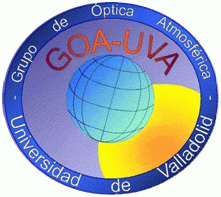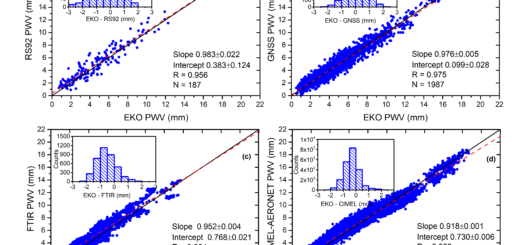Collaboration with the Atmospheric Optics Group (University of (Valladolid)


The collaboration between the Izaña Atmospheric Research Center (CIAI, AEMET) and the Group of Atmospheric Optics of the University of Valladolid (GOA-UVA) extends throughout almost one decade. In this time these tow groups have participated in numerous joint scientific initiatives and research projects.
In the last years this collaboration has been reinforced and made official by means of agreements between AEMET and the Valladolid University (UVA).
- On September 26, 2002, an “Academic, Scientific and Cultural Frame Collaboration Agreement” was signed between the (former) National Institute of Meteorology and the University of Valladolid. This agreement was prorogued, on September 20, 2006.
- On April 24, 2007 the “Specific Agreement of Collaboration between the (former) National Institute of Meteorology and the University of Valladolid for the establishment of quality control methodologies and systems for the photometry, atmospheric radiometry, ozone and aerosols programs within the World Meteorological Organization (WMO) Global Atmospheric Watch (GAW) Programme” was signed.
The specific agreement develops the previous general agreement and regulates the collaboration between both institutions in order to support the CIAI in new GAW-programme challenges. It is in the heat of syntony with the initiatives that society and governmental institutions are demanding us in order to harness Spanish science.
By means of this agreement significant facts are legally made possible such as the following: the UVA has deposited scientific material of its property in the facilities of the CIAI and two investigators contracted by the UVA, and pertaining to the GOA (Group of Excellence of the “Junta de Castilla and Leon”), are working physically at Izaña. These investigators also develop a scientific work for their doctoral Theses, supervised by members of both groups, under the programs of doctorate of the UVA.
This agreement establishes a tight and complete scientific program that continuous and increases the existing collaboration. Thus we have a line of work centred in the study of the optical properties of total column aerosols, based fundamentally on photometric measurements of the RIMA-PHOTONS-AERONET network. This thematic is very ample since it extends from the calibration of the photometers, to the last analysis of products generated with the use of very sophisticated algorithms on experimental measurements of solar irradiance and sky radiance. This line supports the RIMA network development in collaboration with other national and international institutions.
Another line is centred in the analysis, evaluation and development of methodologies for the measurement of spectral and integrated solar radiation in different spectral ranges (UV, visible and IR). It also implies to know and to apply the methodologies of calibration of specific radiation instruments, to evaluate the quality of measured data, (as it demands the BSRN network), and the application of models of radiative transference to evaluate data quality, perform predictions, establish climatologies, and study the influence of several parameters, like the aerosols, ozone, clouds, etc.
Another activity of instrumental character, that arises like a forced necessity of the previous activities, and that it is necessary to face in parallel, is concerning the development and the operativity of optical calibration systems for radiometers and spectroradiometers. These must meet the protocols and requirements demanded by several world-wide measurement networks. For this reason, it has been put in operation the laboratories of radiometric calibration at the CIAI. The equipment of these laboratories has been designed and made as result of a fruitful joint collaboration of members of both groups. The physical construction of this equipment has been made completely in the mechanical and optical facilities at the GOA-UVA in Valladolid. Three calibration set-ups has been designed and installed: calibration of the spectral response in horizontal set up, calibration of the spectral response in vertical set-up, and calibration of the angular response.
We pretend in continuing with all these scientific activities of interest for both institutions in the future, being open to others might arise in different fields: atmospheric studies, environment issues, climate, Earth observation, solar energy, etc., in collaboration with other national and international institutions.






